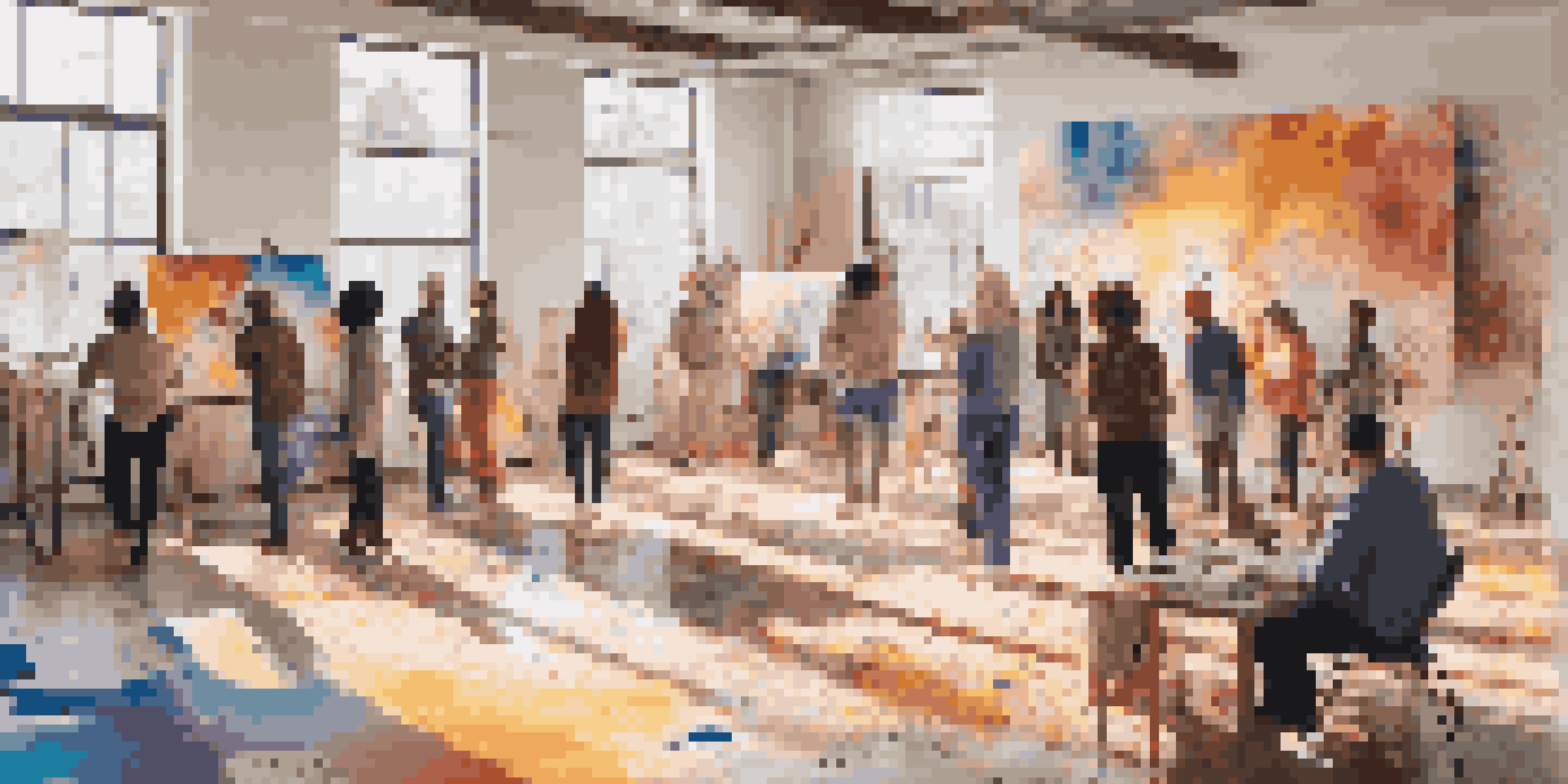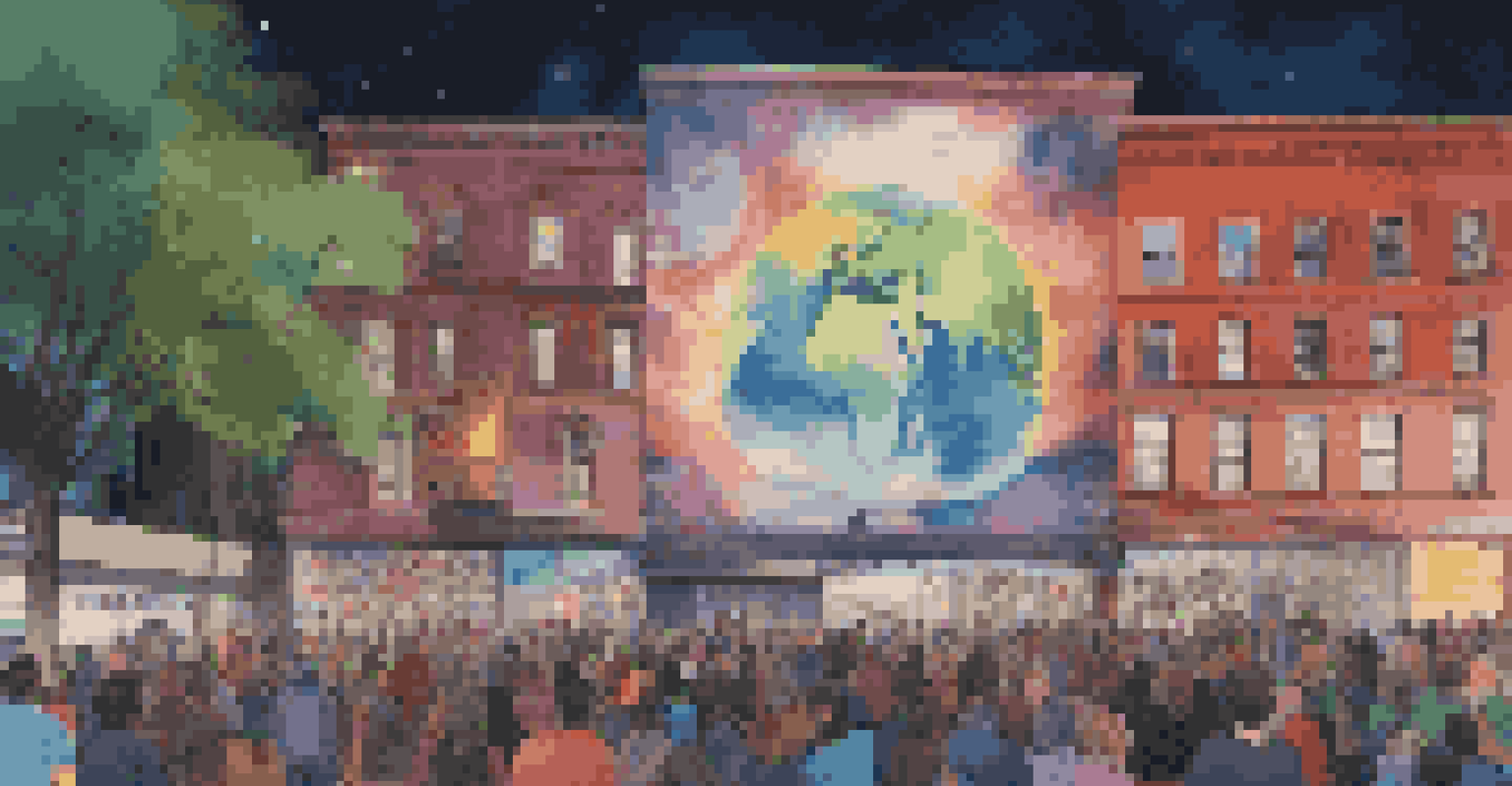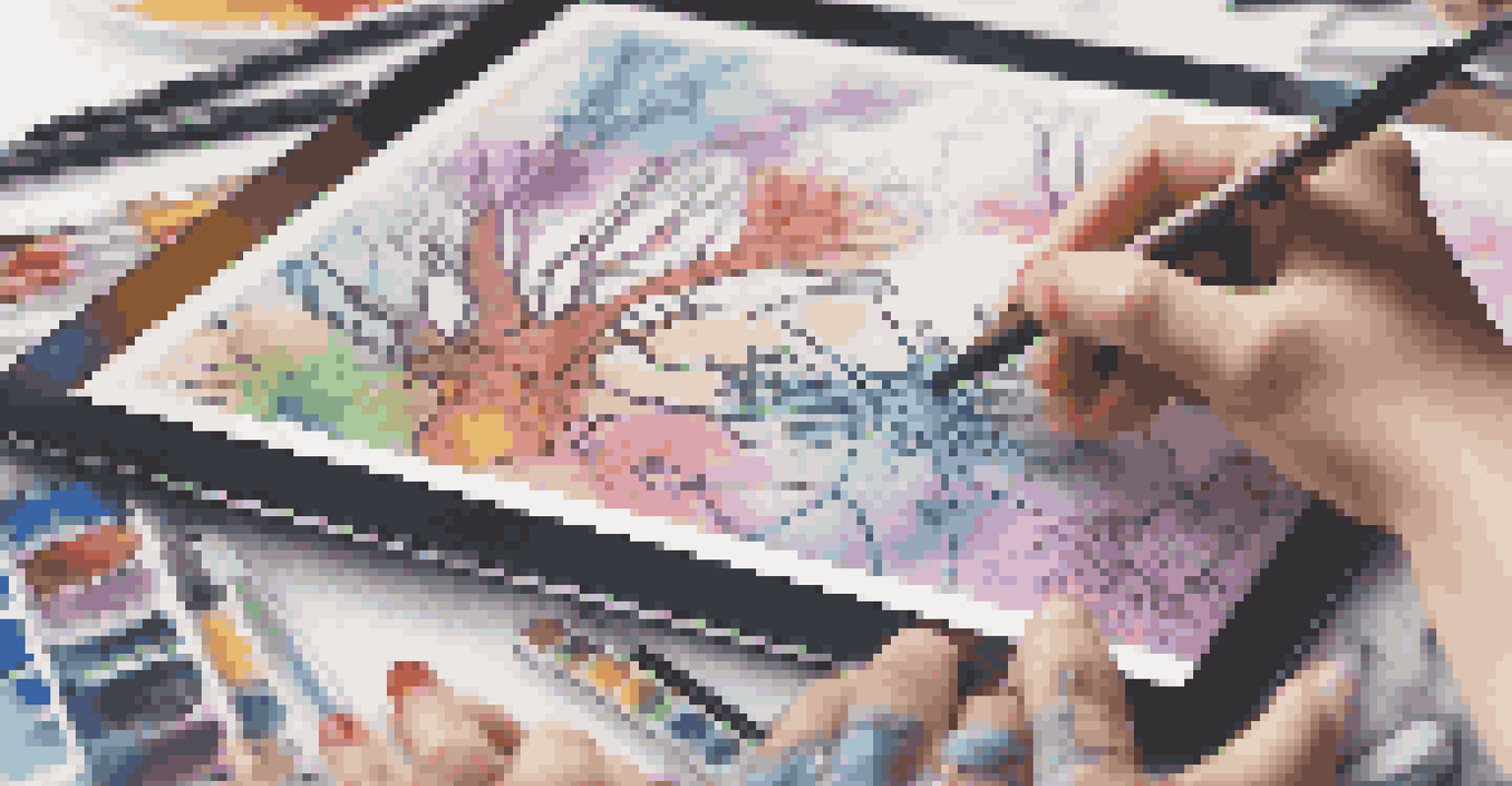The Role of Art Collectives in Digital Activism Movements

Understanding Art Collectives and Their Purpose
Art collectives are groups of artists who collaborate to create and promote art that reflects shared values and social issues. They often function outside traditional art institutions, allowing for more experimental and politically charged work. By pooling their resources and talents, these collectives can amplify their voices and reach wider audiences.
Art is not a mirror to hold up to society, but a hammer with which to shape it.
The essence of an art collective lies in its community-driven approach, fostering a sense of belonging among members. This collaborative spirit not only enhances creativity but also strengthens the impact of their messages. Collectives can address complex issues like social justice, environmental concerns, and human rights through their art.
In a world where individual artists may struggle to gain visibility, art collectives offer a supportive platform. They provide a space for experimentation and innovation, essential for engaging effectively with pressing global issues. This collaborative nature is what makes them vital players in the realm of digital activism.
The Intersection of Art and Digital Activism
Digital activism has transformed the way movements are organized and communicated, and art collectives have embraced this shift wholeheartedly. By utilizing digital platforms, they can share their art widely and engage with diverse audiences. This approach allows them to create impactful visual narratives that resonate on a global scale.

Art in the digital realm can take many forms, from social media campaigns to interactive installations. Collectives often leverage trending platforms, ensuring their messages are timely and relevant. For example, a powerful digital mural can spread across social media, reaching thousands in mere hours.
Art Collectives Amplify Voices
Art collectives unite artists to create impactful work that addresses social issues and fosters community engagement.
The integration of art and digital activism not only enhances visibility but also fosters community engagement. Through hashtags and online challenges, art collectives can encourage participation and dialogue, creating a ripple effect that inspires action. This synergy is crucial for movements seeking to effect change in today's interconnected world.
Case Studies: Successful Art Collectives in Action
One notable example is the collective known as 'The Guerrilla Girls,' which uses humor and bold visuals to challenge sexism and racism in the art world. Their iconic posters and campaigns have sparked conversations worldwide, showcasing how art can serve as a powerful tool for social critique. By harnessing the power of digital platforms, they have made their message accessible to a broader audience.
Creativity takes courage.
Another example is 'The Yes Men,' a group that employs satire to expose corporate wrongdoing and environmental issues. Through fake press releases and public performances, they draw attention to urgent matters, demonstrating the potential of art as a form of activism. Their work often goes viral online, amplifying their impact.
These case studies illustrate that art collectives are not just creators; they are catalysts for change. By merging creativity with activism, they highlight critical issues and encourage dialogue, proving that art has a vital role in shaping public discourse.
The Role of Social Media in Art Collectives' Activism
Social media platforms serve as essential tools for art collectives, enabling them to share their work widely and interact with audiences in real-time. By posting images, videos, and stories, they can engage followers and encourage them to participate in their initiatives. This direct line of communication fosters a sense of community and shared purpose.
Hashtags play a crucial role in amplifying messages and connecting like-minded individuals. For instance, the hashtag #ArtForChange has been used by numerous collectives to highlight their activism and rally support. This strategy not only increases visibility but also encourages others to join the conversation.
Digital Platforms Enhance Activism
By leveraging social media, art collectives can share their messages widely and engage with audiences in real-time.
Moreover, social media allows art collectives to respond quickly to current events and trends. This agility enables them to create art that is both timely and relevant, addressing pressing issues as they arise. In this way, social media acts as a catalyst for collective action, empowering artists to make a difference.
Challenges Faced by Art Collectives in Digital Activism
Despite their successes, art collectives face several challenges in the realm of digital activism. One significant hurdle is the oversaturation of content online, which can make it difficult for their messages to stand out. With countless voices competing for attention, collectives must find innovative ways to engage their audience and convey their messages effectively.
Additionally, the rapid pace of social media can lead to a phenomenon known as 'scroll fatigue,' where users become desensitized to important issues. Art collectives need to strike a balance between frequency and quality, ensuring their work remains impactful without overwhelming their audience.
Furthermore, navigating online platforms comes with its own set of risks, including censorship and backlash. Art that challenges the status quo may face scrutiny or be removed from certain platforms. Collectives must be prepared to adapt and find alternative ways to share their messages in the face of these obstacles.
The Future of Art Collectives in Activism
As digital activism continues to evolve, art collectives are likely to play an increasingly prominent role. Their ability to adapt quickly and creatively to new platforms will be vital in addressing emerging social issues. We can expect to see more innovative projects that blend technology, art, and activism in impactful ways.
The rise of virtual and augmented reality presents exciting opportunities for art collectives to engage audiences in immersive experiences. These technologies can transform the way people interact with art, allowing for deeper emotional connections and heightened awareness of social issues. This evolution could lead to entirely new forms of activism.
Challenges in Digital Activism
Despite their influence, art collectives face challenges like content oversaturation and censorship in the digital space.
Ultimately, the future of art collectives in activism hinges on their commitment to collaboration and community engagement. By working together and embracing new technologies, they can continue to inspire change and mobilize support for critical causes, ensuring that their voices remain relevant in the digital age.
Conclusion: The Lasting Impact of Art Collectives
Art collectives have proven to be powerful agents of change in the landscape of digital activism. Their ability to blend creativity with social commentary allows them to address urgent issues while inspiring others to take action. By harnessing the collective power of artists, they can amplify their messages and reach broader audiences.
Through collaboration, art collectives create a sense of belonging and shared purpose, fostering a community that values social justice. This approach not only enhances the artistic process but also strengthens the impact of their activism. As they continue to innovate and adapt, their influence will likely grow.

In a world where art can often feel disconnected from real-life struggles, art collectives serve as a reminder of the transformative power of creativity. By engaging with digital activism, they not only highlight important social issues but also inspire hope and change, proving that art can indeed make a difference.